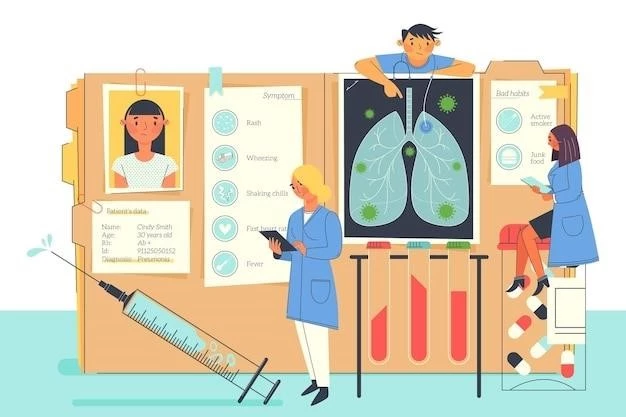Disease ─ Lung Neoplasm
When it comes to lung neoplasms, understanding the various types, causes, and treatment options is crucial. From surgical interventions to chemotherapy and radiation therapy, tackling this malignancy requires a multidisciplinary approach.
Introduction
Lung neoplasm refers to abnormal cell growth in the lungs, often leading to the formation of tumors. This condition, commonly known as lung cancer, can be life-threatening if not diagnosed and treated early. Understanding the risk factors, symptoms, and treatment options for lung neoplasms is essential for improving outcomes and quality of life for patients. This article aims to explore the nuances of lung neoplasms, from its causes to different treatment modalities available in the field of oncology.
Understanding Lung Neoplasm
Lung neoplasm, commonly referred to as lung cancer, occurs when abnormal cells in the lungs grow uncontrollably, forming a malignant tumor. This tumor can interfere with the normal function of the lungs, leading to various symptoms and complications. Understanding the biology of lung neoplasms, such as how they develop, spread, and interact with the body, is crucial for effective diagnosis and treatment. By delving into the intricacies of lung neoplasms, healthcare professionals can tailor personalized treatment plans that target the specific characteristics of the tumor, improving the chances of successful outcomes for patients.
Types of Lung Neoplasms
There are several types of lung neoplasms, with the two main categories being small cell lung carcinoma (SCLC) and non-small cell lung carcinoma (NSCLC). SCLC is less common but tends to grow and spread quickly. NSCLC, which includes adenocarcinoma, squamous cell carcinoma, and large cell carcinoma, is the most prevalent type of lung cancer. Each type has distinct characteristics and may require different treatment approaches. Understanding the specific type of lung neoplasm is essential for determining the most effective course of action to combat the malignancy.
Causes and Risk Factors
The primary cause of lung neoplasms is long-term exposure to carcinogens, such as cigarette smoke, radon gas, and certain industrial chemicals. Smoking is the leading risk factor for lung cancer, accounting for a significant number of cases worldwide. Other risk factors include genetics, exposure to secondhand smoke, and environmental factors like air pollution. Understanding the causes and risk factors associated with lung neoplasms is crucial for prevention strategies and early detection efforts.
Symptoms and Diagnosis
The symptoms of lung neoplasms can vary depending on the type and stage of the cancer but may include persistent cough, chest pain, shortness of breath, coughing up blood, fatigue, and unexplained weight loss. Early-stage lung neoplasms may not produce noticeable symptoms, making diagnosis challenging. Diagnostic methods include imaging tests like X-rays and CT scans, sputum cytology, bronchoscopy, and biopsy. Timely and accurate diagnosis is crucial for determining the appropriate treatment plan and improving outcomes for individuals affected by lung neoplasms.
Stages of Lung Neoplasm
Lung neoplasms are staged based on the extent of cancer within the lungs and whether it has spread to other parts of the body. The stages range from 0 (carcinoma in situ) to IV (advanced metastatic cancer). Staging helps healthcare providers determine the most appropriate treatment plan and predict the prognosis for individuals with lung neoplasms. Understanding the specific stage of the cancer is crucial for developing a personalized approach to managing the disease and optimizing the chances of successful treatment outcomes.
Treatment Options
Managing lung neoplasms requires a multi-faceted approach that may include surgery, chemotherapy, radiation therapy, targeted therapy, and immunotherapy. The choice of treatment depends on various factors such as the type and stage of the cancer, overall health of the patient, and treatment goals. Surgical interventions aim to remove the tumor and affected lung tissue, while chemotherapy and radiation therapy target cancer cells throughout the body. Targeted therapy and immunotherapy focus on specific cancer cell mutations and boosting the immune system’s ability to fight cancer. A combination of these treatment modalities may be used to effectively combat lung neoplasms and improve patient outcomes.
Surgical Interventions
Surgical interventions play a crucial role in the treatment of lung neoplasms, particularly in the early stages of the disease. The main types of surgical procedures for lung cancer include lobectomy, pneumonectomy, segmentectomy, and wedge resection. Lobectomy involves removing the entire lobe of the lung affected by cancer, while a pneumonectomy involves removing the entire lung. Segmentectomy and wedge resection are less extensive surgeries that remove a portion of the lung. Surgical interventions aim to remove the tumor and any surrounding tissue affected by cancer, helping to improve survival rates and quality of life for patients with lung neoplasms.
Chemotherapy and Radiation Therapy
Chemotherapy and radiation therapy are common treatment modalities used in the management of lung neoplasms. Chemotherapy involves the use of drugs to kill cancer cells or slow their growth. Radiation therapy uses high-energy rays to target and destroy cancer cells. These treatments may be used alone or in combination with surgery or other therapies, depending on the type and stage of the lung cancer. Side effects of chemotherapy and radiation therapy can vary but are carefully managed by healthcare providers to minimize discomfort and maximize treatment effectiveness. These therapies play a crucial role in combating lung neoplasms and improving patient outcomes.
Targeted Therapy and Immunotherapy
Targeted therapy and immunotherapy are innovative treatment approaches in the field of oncology for lung neoplasms. Targeted therapy focuses on specific genetic mutations or molecular changes within cancer cells, disrupting their growth and spread. Immunotherapy, on the other hand, harnesses the power of the immune system to identify and attack cancer cells. These precision therapies offer a personalized approach to treating lung cancer, with fewer side effects compared to traditional chemotherapy. By targeting the unique aspects of the cancer cells and boosting the body’s immune response, targeted therapy and immunotherapy have shown promising results in improving outcomes for individuals with lung neoplasms.
Metastasis and Prognosis
Metastasis, the spread of cancer from the lungs to other parts of the body, significantly impacts the prognosis of individuals with lung neoplasms. The presence of metastatic disease often indicates advanced cancer and can make treatment more challenging. Prognosis for lung neoplasms depends on various factors, including the stage of the cancer, the type of tumor, the individual’s overall health, and response to treatment. Early detection and intervention are critical in improving outcomes and increasing survival rates. Understanding the potential for metastasis and its implications on prognosis is essential for healthcare providers to develop individualized treatment plans and support patients through their cancer journey.
Palliative Care
Palliative care plays a vital role in supporting individuals with lung neoplasms by focusing on improving quality of life and managing symptoms. This specialized medical care aims to provide physical, emotional, and spiritual support to patients and their families throughout the cancer journey. Palliative care addresses pain, discomfort, and other side effects of treatment, helping individuals maintain dignity and comfort. It also offers psychological support, counseling, and assistance with end-of-life decisions. Integrating palliative care into the treatment plan for lung neoplasms ensures that individuals receive comprehensive and compassionate care tailored to their unique needs.
Prevention and Lifestyle Changes
Prevention strategies for lung neoplasms focus on reducing exposure to known risk factors such as tobacco smoke, radon gas, and environmental pollutants. Smoking cessation is the most significant step individuals can take to lower their risk of developing lung cancer. Adopting a healthy lifestyle that includes regular exercise, a balanced diet, and avoiding secondhand smoke can also contribute to reducing the risk of lung neoplasms. Maintaining a healthy weight and staying up to date with cancer screenings and vaccinations can further aid in early detection and prevention. By making positive lifestyle changes and being aware of potential risk factors, individuals can take proactive steps to protect their lung health and overall well-being.
Conclusion
In conclusion, lung neoplasms present a significant health challenge worldwide, with diverse types and stages that require personalized treatment approaches. From surgical interventions and chemotherapy to targeted therapy and immunotherapy, advancements in oncology have transformed the management of lung cancer. Early detection, timely diagnosis, and multidisciplinary care play key roles in improving outcomes and prognosis for individuals with lung neoplasms. Emphasizing prevention strategies, lifestyle modifications, and palliative care can enhance the quality of life for patients facing this disease. By raising awareness, promoting research, and fostering a supportive healthcare environment, we can continue to make strides in the fight against lung neoplasms.

